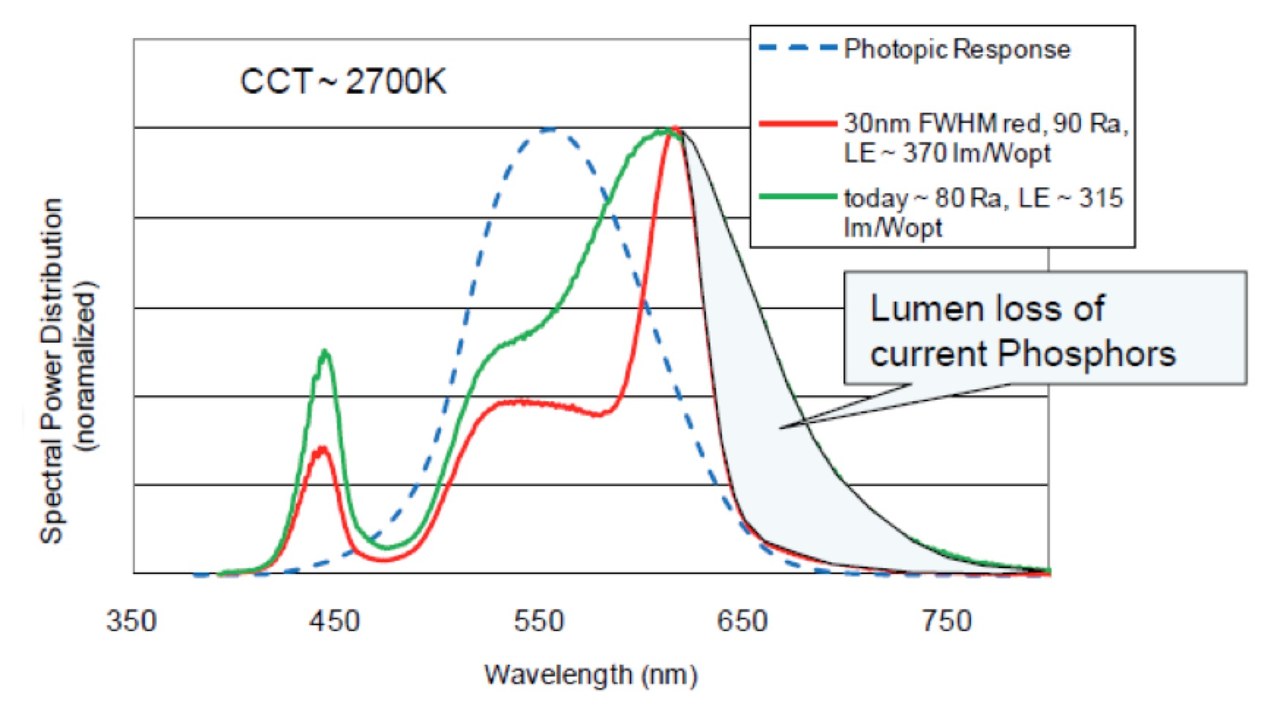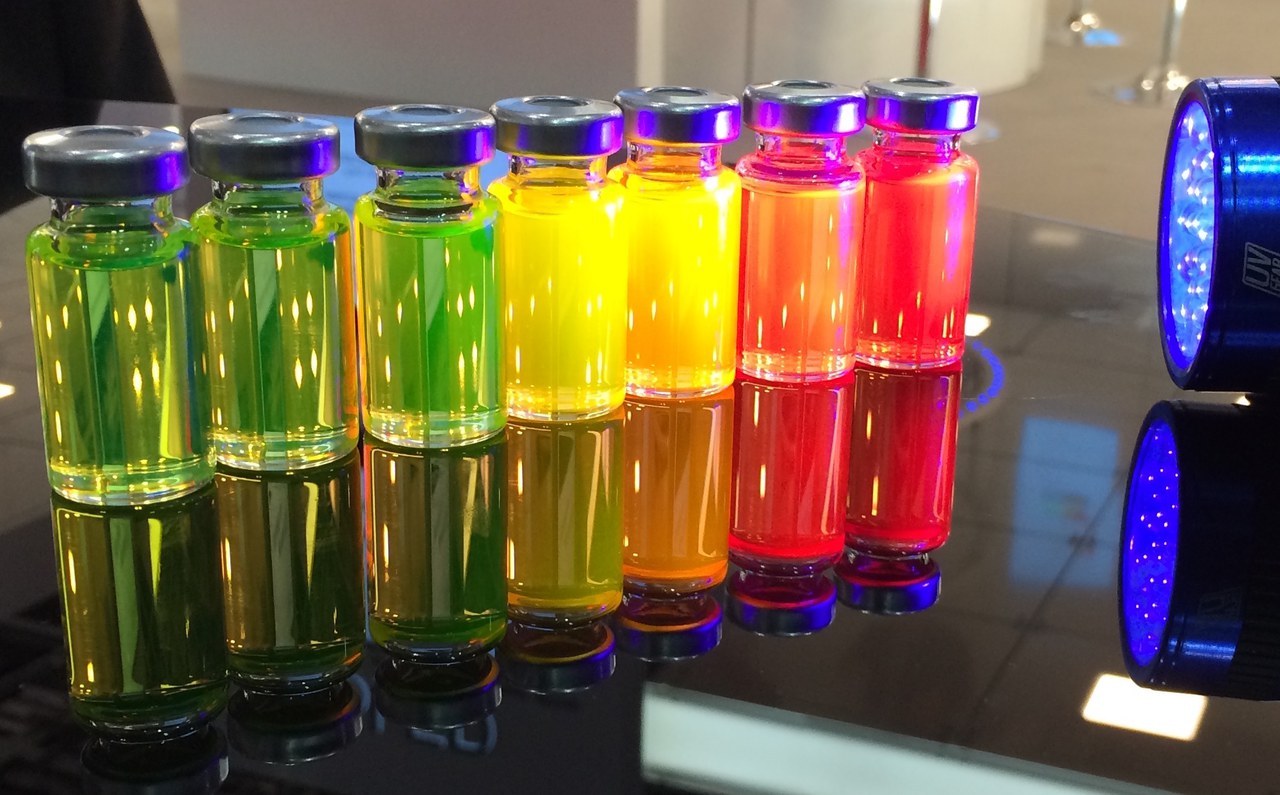Industry Breakthrough: Narrow Emission QD's Improve Warm White LED Performance and Improve Color Rendering
In an interview with LED professional at the Lightfair International in Philadelphia, Dr. Jy Bhardwaj, CTO at Lumileds, explained the advantages of the Quantum Dots technology. Lumileds will launch the first QD LED within the next few months.

QD based LEDs have shown promise for over a decade after the first demonstration of color conversion with a blue LED. The combination of narrow full width at half-maximum (FHWM) and tunable peak wavelength of red QDs has resulted in 17% efficiency improvement of QD based LEDs compared to commercial red nitride based LEDs. The LED stability with 20 W∕cm2 of incident blue light and QD temperatures over 110°C have passed 3,000 h and continue to show no degradation.

Figure 1: Improved CE and CRI by eliminating the light outside the photopic (eye) response. Up to 10-20% performance improvement especially for CRI 90.

Figure 2: LUXEON 3535L HE PLUS - First mass-produced QD LED will be launched within the next months.

Figure 3: Emission spectrum comparison. Conventional phosphor (top), QD LEDs (bottom).
"The QD emission wavelength can be tuned by the size of the particle. This huge improvement will lead to 50% reduction of the number of LEDs needed for a given system and specification", said Dr. Jy Bhardwaj at the Lightfair International in Philadelphia.
For further information please read the upcoming LpR issues and/or visit the LpS 2017 event on SEPT 26-28, 2017 in Bregenz (www.LpS2017.com).
(c) Luger Research e.U. - 2017

